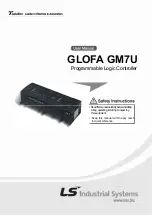
I: df
≤
min(
Phase_Seg1, Phase_Seg2)
[2x(13xbit_time -
)]
Phase_Seg2
-----------------------------------------------------------------------
II: df
≤
SJW
20xbit_time
-------------------------
(1-df) x f
f
(1+df) x f
nom
osc
nom
≤
≤
CAN Bit Timing
1422
SPNU563A – March 2018
Copyright © 2018, Texas Instruments Incorporated
Controller Area Network (DCAN) Module
27.3.1.1 Synchronization Segment
The Synchronization Segment (Sync_Seg) is the part of the bit time where edges of the CAN bus level are
expected to occur. If an edge occurs outside of Sync_Seg, its distance to the Sync_Seg is called the
phase error of this edge.
27.3.1.2 Propagation Time Segment
This part of the bit time is used to compensate physical delay times within the CAN network. These delay
times consist of the signal propagation time on the bus and the internal delay time of the CAN nodes.
27.3.1.3 Phase Buffer Segments and Synchronization
The Phase Buffer Segments (Phase_Seg1 and Phase_Seg2) and the Synchronization Jump Width (SJW)
are used to compensate for the oscillator tolerance.
The Phase Buffer Segments surround the sample point. The Phase Buffer Segments may be lengthened
or shortened by synchronization.
The Synchronization Jump Width (SJW) defines how far the resynchronizing mechanism may move the
sample point inside the limits defined by the Phase Buffer Segments to compensate for edge phase
errors.
Synchronizations occur on edges from recessive to dominant. Their purpose is to control the distance
between edges and sample points.
Edges are detected by sampling the actual bus level in each time quantum and comparing it with the bus
level at the previous sample point. A synchronization may be done only if a recessive bit was sampled at
the previous sample point and if the actual time quantum’s bus level is dominant.
An edge is synchronous if it occurs inside of Sync_Seg, otherwise its distance to the Sync_Seg is the
edge phase error, measured in time quanta. If the edge occurs before Sync_Seg, the phase error is
negative, else it is positive.
27.3.1.4 Oscillator Tolerance Range
With the introduction of CAN protocol version 1.2, the option to synchronize on edges from dominant to
recessive became obsolete. Only edges from recessive to dominant are considered for synchronization.
The protocol update to version 2.0 (A and B) had no influence on the oscillator tolerance.
The tolerance range df for an oscillator’s frequency f
osc
around the nominal frequency f
nom
with:
(35)
depends on the proportions of Phase_Seg1, Phase_Seg2, SJW, and the bit time. The maximum tolerance
df is the defined by two conditions (both shall be met):
(36)
It has to be considered that SJW may not be larger than the smaller of the Phase Buffer Segments and
that the Propagation Time Segment limits that part of the bit time that may be used for the Phase Buffer
Segments.
The combination Prop_Seg = 1 and Phase_Seg1 = Phase_Seg2 = SJW = 4 allows the largest possible
oscillator tolerance of 1.58%. This combination with a Propagation Time Segment of only 10% of the bit
time is not suitable for short bit times; it can be used for bit rates of up to 125 kBit/s (bit time = 8
μ
s) with a
bus length of 40 m.
















































